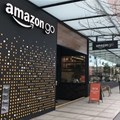The "end" of the shopkeeper (and other retail trends)

“Smart” vs. “simple” assistants
The past few years have seen many international brands improving the way they approach customer interactions, but this hasn’t always translated to brand success. For instance, smart, AI-powered and natural language processing (NLP) reliant bots may not always be as effective in solving customer service queries compared to simpler rules-based chatbots.
For this reason, many well-known brands (such as Amazon) are now favouring implementing rules-based chatbots (over so-called “smart bots”) to provide more accurate responses and resolve queries more efficiently. A rules-based chatbot, for example, doesn’t need to interpret questions – responses are programmed and predetermined which adds an element of reliability and consistency – and if a bot is unable to assist the customer, the query can be directed to a live customer service or sales agent for resolution.
Where the application of AI is still being refined, particularly in interpreting human intentions and behaviour according to NLP, actual human assistants are still necessary to address more complicated queries that require human qualities such as reasoning or insight. Ultimately, we’re moving towards an environment where human agents won’t be required to handle all forms of communication, particularly those simple repetitive queries that may be more efficiently performed via automation or self-service.
In the contact centre environment, a cohesive system must be in place to ensure that there’s a seamless link between human and machine-based interactions, as well as any manual and automated tasks within a broader process that needs to completed.
The rise of the Smart Store
Global fast-food giant McDonald's recently opened a restaurant in Chicago that embraces self-service in a way that is different to other outlets: from ordering to checkout, the process is designed to be seamless and simplified by using self-order kiosks, table service, and mobile orders and payments. Amazon’s supermarket concept, Amazon Go, takes this a step further with the launch of their two Seattle stores, with no checkout operators, waiting in line, or self-service kiosks – all purchases are entirely app-based to embrace the “grab and go” philosophy of a hassle-free shopping experience.
But where does this leave traditional retail environments? Amazon Go stores bridge the gap between e-tail and retail, thus combining digital and physical customer behavioural and profile data to paint a more holistic view of their customers. The concept also aims to remove friction and pain points during the customer journey (e.g. no payment or checkout process needed) – is this now the new ultimate and preferred experience of the ever-evolving digitally-savvy consumer?
A personal journey
While the introduction of certain technologies does allow for more automation and self-service options, it’s important to not lose sight of one of the key objectives of introducing smart technology in retail – to promote personalisation and CX. It’s not just about getting the customer from product choice to check out quickly and efficiently, but it is also to replicate that corner-store experience where the customer feels that they are being recognised as an individual and valued.
Data-driven processes and insights contribute towards creating an experience that is more intimate and in line with customer preferences, but will businesses ever completely replicate and replace the personalisation we experience from local shopkeepers (e.g. hardware stores or butchers) at scale?
As more technologies are introduced, and the demands of customers increase, we are creating additional complexities that restrict our ability to manage the customer experience effectively. While the difficulty of the challenge remains, breaking goals and objectives down into small manageable steps and doing the simple things well is ultimately the first step in achieving CX excellence.
The goal, as always in retail, is to boost productivity and efficiency and provide opportunities to increase the bottom line, but never at the cost of CX, which remains a priority that will result in ongoing company growth.
About Wynand Smit
- Embrace self-service to improve customer experience - 17 Feb 2020
- Prevent poor customer service from killing your brand - 19 Aug 2019
- Safeguard your customer relationships this Black Friday - 13 Nov 2018
- The "end" of the shopkeeper (and other retail trends) - 29 Aug 2018
- Maximising ROI without compromising on CX - top tips - 31 Jul 2018
View my profile and articles...

